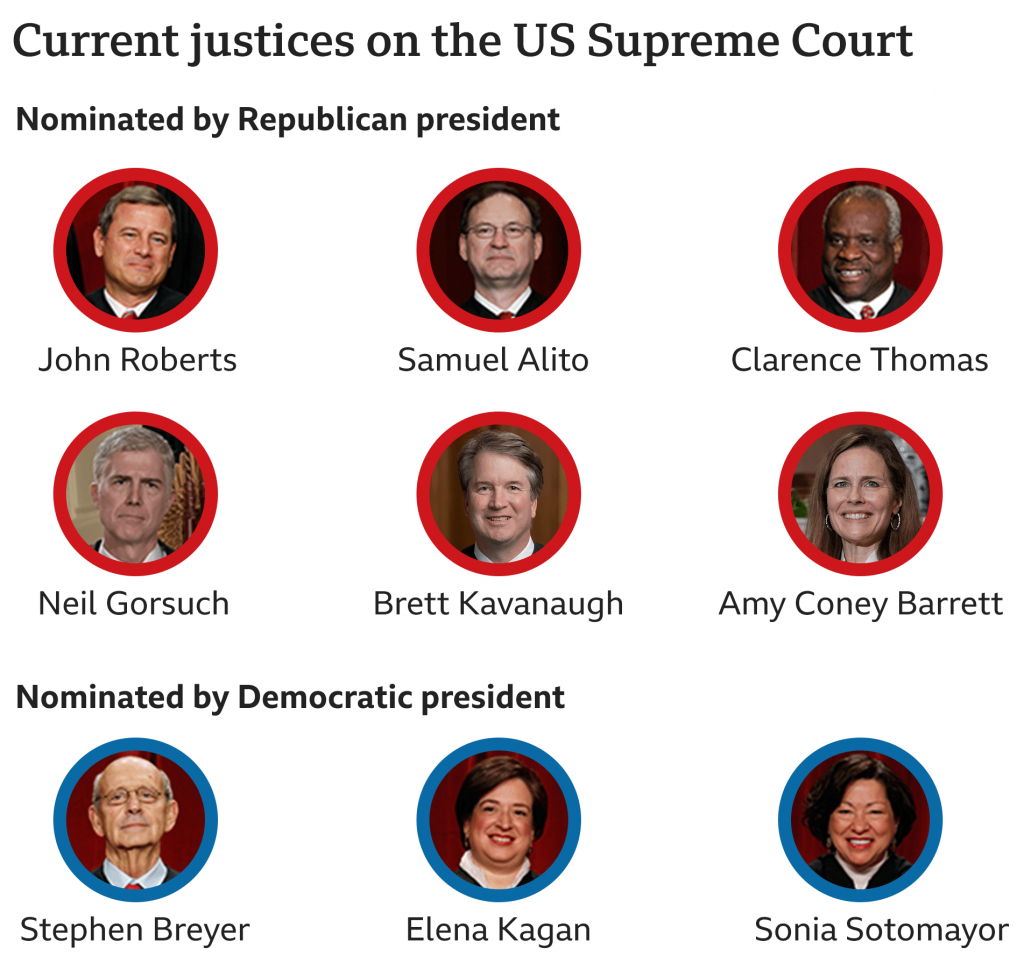Current Case Docket: Updates
April 29th, 2021

Hello, and welcome back to another week at the Supreme Court! This week, we are looking at the court to see what they are looking at. Last time we checked in, there were two cases we were looking at, US v. Tsarnaev and Texas v. California. Unfortunately, Texas’ case was denied by the justices and Tsarnaev has not be granted either. So instead, we are checking out a new case that the Court will be hearing. The case is Mahonoy Area School District v. B.L. This case revolves around a student right of speech and whether or not the school has a right to punish a student for something they say outside of school on social media. Brandi Levy is a student who was banned from cheerleading for a year after she posted “fuck school fuck softball fuck cheer fuck everything” on Snapchat. Her and her family are suing the school, and the case has risen to the Supreme Court. The discussion is on whether or not Tinker v. Des Moines (which says that public school officials may regulate speech that disrupts the work or discipline of a school) applies to a student’s speech when they are not actually at school.
This case could potentially affect how any public-school views content a student posts outside of school, especially if the content is in relation to the school. It would also change the way any school could view students and admissions. The case is expected to go into oral argument soon (where the attorneys argue in front of the justices) and we should have a ruling in the near future.
That is all for this week, see you guys soon for another round at the Supreme Court!
Roe v. Wade-The Basics
April 27th, 2021
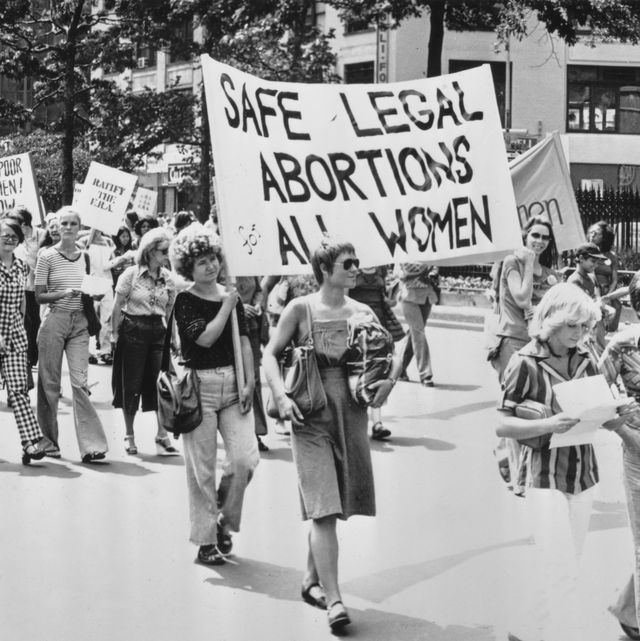
Hello, and welcome back to another week at the Supreme Court. This week we are going over the basics of a case that has long been in the public eye for discussion and what it means. Roe v. Wade follows a woman under the alias of Jane Roe, to protect her identity, suing a district attorney in Dallas, Texas on the basis that a Texas law banning all abortion unless the woman’s life is in danger. This challenge to the Texas law came on the grounds of personal privacy guaranteed by First, Fourth, Fifth, Ninth and Fourteenth amendments, as to whether or not a woman has the choice to terminate their own pregnancy.
The Supreme Court ruled in a 7-2 opinion to side with Jane Roe. What that meant is that the Due Process Clause (prohibits depriving citizens of life, liberty, or property by the government) of the 14th amendment protects a woman’s right to her own privacy. The court said in its opinion that the state has a legitimate interest in protecting the “potentiality of human life”, however this has varying weight over the course of a pregnancy that the court says must be considered. In the first trimester, the government has no say over the decision to abort a pregnancy, which is left to the woman and her physician. The second trimester allows for the government to interfere only on the grounds of protecting the mother’s health and the third the government can prohibit it unless it is necessary to save the mothers life.
Roe v. Wade continues to be hotly discussed topic in American politics. Even today, the Supreme Court continues to hear cases on the topic that change the shape of abortion in the United States. That is all this week, see you guys next week to check in on some cases from earlier this semester!
Citizens United
April 16th, 2021
Hello everyone and welcome back to another week at the Supreme Court. This week we are talking about perhaps one of the most impactful and some might say problematic Supreme Court cases in the last 20 years. Citizens United v. FEC is often simply referred to as “Citizens United” because it simple. It is also one of the only simple things about this case. My goal today is to try to distill it as much as possible.

First things first, I will tell you what it means. Citizens United overruled a long-standing court decision that limited the amount of money that corporations could spend on political campaigns. What this did was allow corporations to act as “people” and thus are required by the Constitution to be able to use their finances to influence campaigns (like commercials, ads, donations to help a politician win an election) as much as they like. Across the last 3 presidential elections, the amount of money spent each election has more than doubled to nearly 10 billion in total spending in the 2020 presidential election. The idea was a conservative non-profit group sued the FEC after they stopped Citizens United from airing a movie that criticized Hillary Clinton leading up to the 2008 presidential election. The idea by the justices who voted in favor of Citizens United (it was a 5-4 vote, so very close) was that the money would be transparent and obviously not corrupt. However, the past election cycles and studies down have found that not to be the case. The reason being is that these corporations can get their money from anywhere, and they are not required to say where it is from. This means that if someone from anywhere in the world wanted a specific politician to win for their gain, they can give money and no one in the US would know where it came from.
That is all this week, I know it was slightly dark, but it is an important case to understand when looking at presidential elections. See you next week!
What is a Swing Vote?
April 8th, 2021
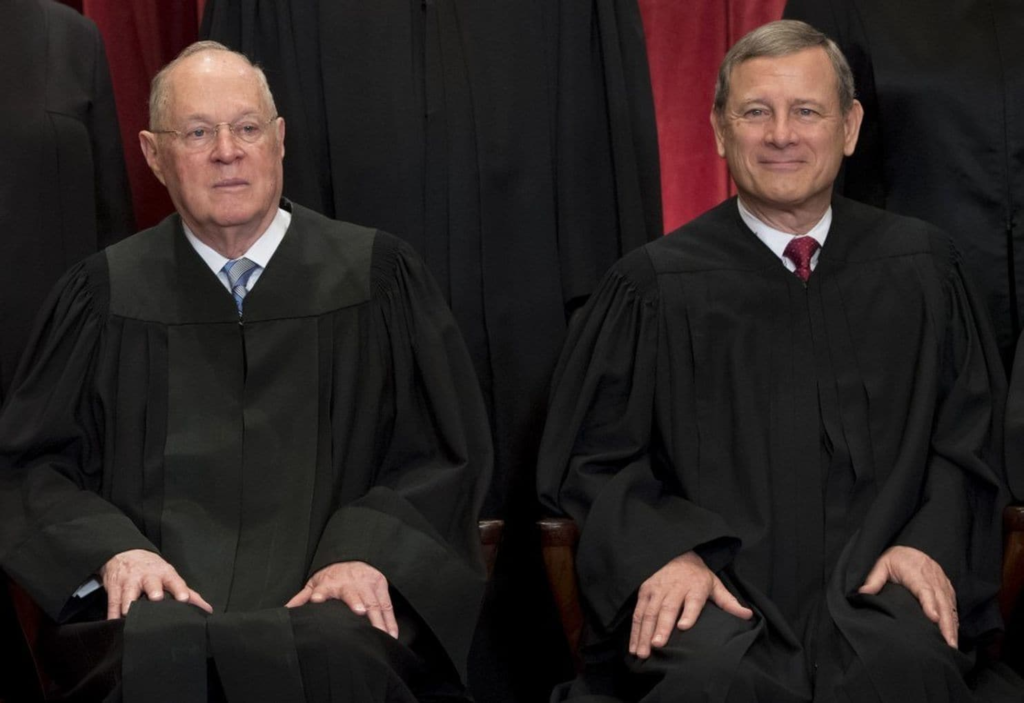
Hello and welcome back to another week at the Supreme Court. This week we will be talking about swing votes, what they are and why they are important.
So, what is a swing vote? Firstly, remember that the Supreme Court has 9 members, meaning if four vote one way and four vote the other, then it is down to one justice to make the ultimate decision. On some courts, there is not a judge that has a tendency to swing one way or the other and there is simply an ideological lead (conservative or liberal). However, for the past 20 odd years there has been a swing vote. The two main swing votes over the past twenty years are Justice Anthony Kennedy and Chief Justice John Roberts.
Justice Kennedy was far more influential in his swing vote capabilities. On things like gay rights, gun rights and the death penalty, he voted liberal. But on issues like abortion, the environment and campaign donations (more on those next week) he votes conservative. Justice Kennedy was referred to as the most powerful person in the country at one point simply because the other 8 justices strictly stuck to party lines, and the decision was often left for Kennedy to make the decision basically on what he felt was the right decision.
Currently, the Court has a similar swing vote, but not nearly as potent. The Chief Justice; John Roberts. His decisions are generally more conservative, and more importantly he seeks the interpret the law, not create new ones. In decisions on things like the Affordable Care Act (Obamacare) and same-sex marriage he has sided liberal, which might have been unpopular with conservatives, but he does not serve them, he seeks in interpret the law, which he has done well.
That is all this week! The next couple weeks we will be going over extremely impactful cases, specifically on abortion and campaign donations.
Landmark Cases pt. 2
April 2nd, 2021
Welcome back to another week at the Supreme Court! This week is a follow up to last weeks as we go over some pretty important cases.
The first of these is Miranda v. Arizona (1966). Yes, it is exactly what you’re thinking, this is where your “Miranda Rights” come from. The case is based on the consolidation of 4 cases in each of which the defendant confessed guilt with out being informed of their 5th amendment rights. In 1963, Ernesto Miranda was coerced after two hours to give a confession without advising Miranda of his 5th amendment right to have an attorney present. The Arizona court held that his rights were not violated but the case was appealed to the Supreme Court. In a very close decision, the Court decided with a 5-4 vote that it is legally required to inform a defendant of their rights, and thus your “miranda rights” were born.
The last of these shorter, yet important case is Marbury v. Madison, a legendary case that reinforced the Supremacy Clause of the Constitution. The Supremacy Clause says that laws made attached to the Constitution are the absolute highest law of the land and take priority over any conflicting state laws. The case concluded in a 6-0 vote that Congress does NOT have the power to overrule a law, as it violates the Supremacy Clause and thus the Constitution. It is not a particularly interesting case, but it solidified that the Judicial Branch is the law maker in the country. Next week, we look at a specific case that has had extremely large implications to the way campaigns are financed in the United States.
Landmark Cases
March 25th, 2021
Hello and welcome back to yet another week at the Supreme Court! This week we will be discussion some remarkably important cases that the Supreme Court has decided over the years and what they mean. First up is Brown v. Board of Education (1954). This is likely a case that many of you are familiar with, but what exactly is it and what does it mean? The question being asked of the Court was whether or not segregation based exclusively on race violates the Equal Protection Clause of the 14th Amendment. The key there is the Equal Protection Clause. A Clause is a single statement or sentence within amendments to the Constitution (Think Right to Free Speech in the 1st amendment). It is quite simple, basically no state or federal law can deprive citizens of their rights of liberty and freedom. The Court determined that separating black and white citizens based solely on color violated black Americans Constitutional rights, and thus enforced segregation was destroyed. Another famous case that many might be familiar with is United States v. Nixon. In light of the Watergate scandal, President Nixon attempted to use one of the powers given to the president called “Executive Privilege”. Executive Privilege is the President’s ability to classify information that he does not want disclosed to the public. In this case, President Nixon attempted to lock information pertaining to his connection to the Watergate scandal behind Executive Privilege which would prevent the Supreme Court or any other court from using that information as evidence in a case. The Supreme Court ruled that the separation of powers does not allow for the President to restrict information in regard to the Due Process (process of being given a fair trial) and that Nixon could not avoid the Court by using the Executive Privilege. In short, he tried to use his powers as the President to hide that he was guilty. That’s all for this week, next week we pick up right here discussing more landmark cases.
Current Cases on the Docket
March 18th, 2021
Hello and welcome back to the Supreme Court. This week, we are looking at a couple of the cases the Supreme Court is considering right now. The Court is unique in that it gets to decide if it wants to listen to a case. So, for example, one of the cases we are looking at is Texas v. California. The case revolves around state travel bans. The state of Texas makes an application to the Supreme Court to see if they will make a ruling on the case. If they decide yes, then the case proceeds and the 9 justices we met the past two weeks will make a decision on it in normal court proceedings. If they decide no, then the case does not move forward at all and the travel ban will remain. Now specifically, Texas v. California is about a California state travel ban that prohibits state-funded or state-sponsored travel to Texas. The reason for this is that California reacted to a Texas law that states that day care providers can deny children that do not align with them religiously if they choose. The goal of California’s travel is to basically make Texas want to rethink its laws regarding religious freedom and the way it affects individuals. The next case is US v. Tsarnaev. That might sound familiar as Tsarnaev is the younger of the two brothers that committed the Boston Marathon Bombing. In the case, they are determining if the District Court made an error in choosing a jury by not asking proper questions, and that the court did not permit all evidence when they were determining if Tsarnaev would get the death penalty. Both of these cases are currently waiting to see if the Supreme Court will hear them, and if the court does decide to, both could have very large implications for the law.
Meet the Justices: Liberals
March 11th, 2021
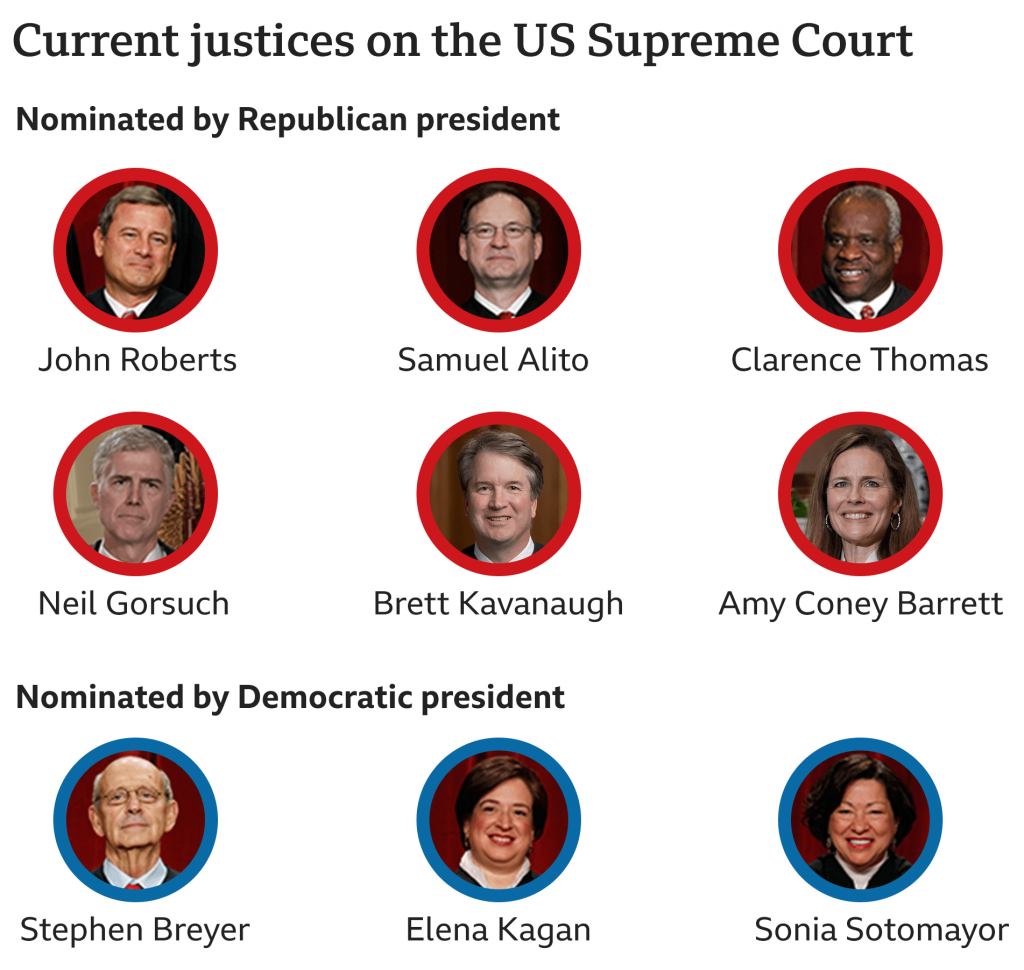
Hello and welcome back! This week I am going to be covering the Liberal justices. The catch with the liberal justices is that as the Supreme Court currently stands, there are only 3 “liberal” justices. A justice that most recently passed away is Ruth Bader Ginsburg, who has since been replaced by the conservative justice Amy Coney Barrett. Justice Ginsburg was among the most liberal of the justices but not definitely the most liberal. That title is held by Sonia Sotomayor, who was appointed by President Barack Obama. She almost exclusively sides with the “liberal” argument on cases and often writers her opinions with quite a bit of a tone towards arguments that might like easy to answer questions but were meant with resistance by certain justices. The next liberal justice is Elena Kagan, who, while is a liberal justice, does lean towards the middle of the pack. She has written extremely important opinion, including one that made it illegal to use race as a way to draw lines for Congress districts. The last liberal justice is Stephen Breyer, who was appointed by President Bill Clinton. Breyer is one of the oldest justices on the court, and while we are currently under a Democrat as president, there is a strong possibility he retires within the next four years so that Joe Biden may pick another justice. His views, like Justice Kagan, are liberal but more close to the middle ground of the opinions. He seeks to make the law simpler and more easily understood to read at first glance. That’s all for this week. Next week, we will be looking at what cases the Supreme Court is currently ruling on and what they might mean.
Meet the Justices: COnservatives
March 4th, 2021
Welcome back! This week, I will be going over the “conservatize” justices on the Supreme Court. Now, I know what you are thinking, there isn’t supposed to be political leanings among the justices right? That is correct, the justices do not align specifically to one party, but they have ideological leanings, based on their personalities. During the Trump presidency, there has been 3 openings in the Supreme Court, which is three opportunities for a Republican president to pick the justices. The three justices selected during the Trump presidency make up a large portion of the conservative justices. Those justices are Neil Gorsuch, Brett Kavanaugh, and Amy Comey Barrett (ACB). Of these justices, Brett Kavanaugh is the most conservative, followed by ACB and then Neil Gorsuch. The issue with rating ACB, is that since she is such a new justice, she has not done nearly as much work on the Supreme Court, it is more based off of her past statements and positions on issues. The most conservative justice is judge Clarence Thomas, who’s opinions often rest alone as his fellow justices do not always agree with him. Closer to the middle, there are two remaining conservative justices. The first is Samuel Alito who, on certain issues, tends to not agree with his conservative counterparts on the legal reasoning behind his decisions, but still ultimately agrees with the answer they arrive at. The last “conservative” justice is also the most important, Chief Justice John Roberts. He is the leading justice in the court, and while is considered conservative, he often sides with the liberal justices, becoming the courts “swing” vote. This position means when the conservative and liberal justice stick to their guns, Chief Justice Roberts often decides the tie vote. Next week, we will be going over the liberal justices, so stick around!
Current Trends in the Court
February 25th, 2021
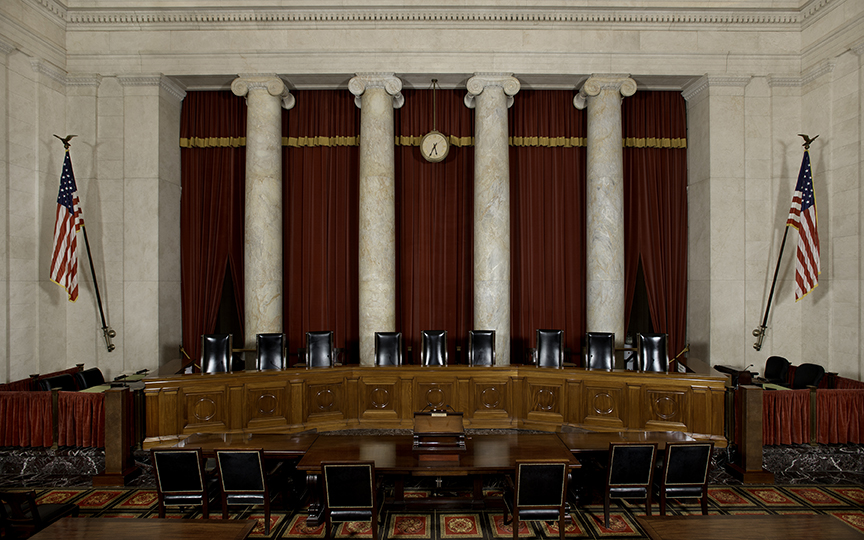
Hello, welcome back to another week at the Supreme Court. This week I will be discussing trends that appear in the court, and why these trends appear. When a court justice is appointed (basically hired) to the Supreme Court, they are chosen by the current president at that time. There are 9 justices, and they have life appointments. What that means is that when they are appointed, they get to keep their jobs so long as they have “good behavior”. Unless you did something extremely unprofessional or literally starting profanity, it is basically a lifetime job. They can either retire, resign, die, or be removed from the position. If one of these four things happens, that leaves an open seat on the court, which you want filled as soon as possible so that there are no ties (4-4). Presidents then get to choose who they want to nominate. Once nominated, there is a brief hearing where members of the Senate decide if that person should be a justice. The trick is, a president can only be in power for 8 years, so conceptually, the only things he can get done are done in those four years. But with the Supreme Court, that is not the case. A president can pick a justice that they feel reflects their ideology, and thus, the beliefs of the president are generally engrained in the Supreme Court. The justices do not vote by party, they are simply more conservative or more liberal (we will be going over who is who in the coming weeks). They also do not vote specifically by the president who appointed them, however generally, especially in larger cases, they stick to their guns, with the exception of a few outliers.
